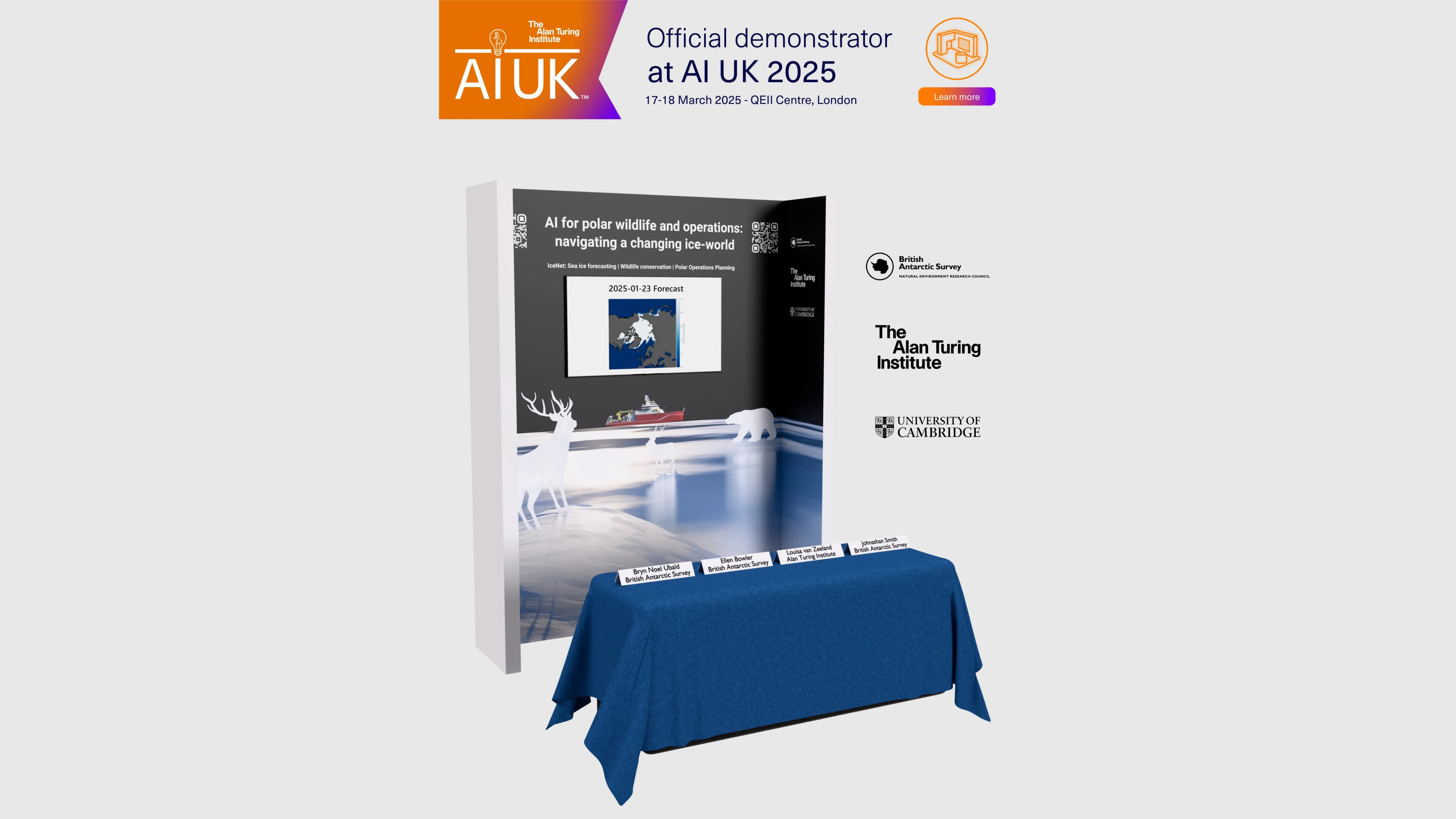· Ellen Bowler · Paper · 5 min read
IceNet case study demonstrates new possibilities for Arctic conservation
[Paper] We use IceNet to predict sea ice migration times for an endangered caribou population, opening doors for more adaptive conservation...
![[Paper] We use IceNet to predict sea ice migration times for an endangered caribou population, opening doors for more adaptive conservation...](/_astro/A herd of Barren-ground caribou move through a snowy landscape_ Wapusk National Park_ Manitoba Canada (Credit Peter Ewins _ WWF-Canada).Co8fmQq4.jpg)
A herd of Barren-ground caribou move through a snowy landscape, Wapusk National Park, Manitoba Canada (Credit Peter Ewins + WWF-Canada)
Overview
From the beginning of the IceNet project, our motivation has been to translate cutting-edge forecasts into real-world impact. Today we’re excited to share insights from our new study, published in Ecological Solutions and Evidence. This research explores how IceNet could empower more dynamic conservation efforts in the rapidly changing Arctic. In collaboration with the Government of Nunavut and WWF, we demonstrate an end-to-end system which takes IceNet forecasts and translates them into predicted sea ice migration times for endangered Dolphin and Union caribou. Systems like this could support local decision-makers safeguard critical sea ice migration routes from icebreaking vessels. More broadly, we hope the work provides a blueprint for novel AI conservation early-warning tools, which could be developed and applied to other species.

Wildlife in a changing Arctic
For many Arctic species sea ice vitally important - a hunting ground, a migration highway, a resting and pupping platform. But as climate change accelerates, with the Arctic warming at four times the global average, sea ice is receding and becoming increasingly unstable. This doesn’t just impact ecosystems; it also opens regions up to increased human activity like shipping, mining, and tourism. This combination of pressures poses a significant risk to the unique wildlife that calls the Arctic home. Going into an uncertain future, accurate predictions become essential if we are to design conservation and management measures which are robust to these changes. But how might these dynamic management systems come together in practice? We sought to investigate this through a targeted case study.
Protecting a vital migration
Dolphin and Union caribou have a unique migration pattern which sees them travel over the seasonally frozen waterways between mainland Canada and Victoria Island. In the spring, before the ice melts, they migrate to summer calving grounds on Victoria Island. In the autumn, they gather on the south coast waiting for the ice-bridge to re-form before they can safely return to their mainland winter range. With later freeze-up dates, caribou are being forced to wait longer on the coast, and traverse less stable ice which can lead to drowning events. Ice-breaking vessels pose a further threat by creating open water leads, potentially blocking crucial migration routes. Local organisations are working together to mitigate vessel impacts to protect the herd (a great summary video of this work here). However, the timing of the autumn migration varies year-to-year, depending on freeze-up dates, making it difficult to anticipate and manage risks.
This is where IceNet comes in…
IceNet enables conservation early-warning
Our model combines caribou tracking data and satellite observations of sea ice to establish connections between sea ice formation and the timing of the autumn migration. IceNet then forecasts when sea ice conditions triggering the autumn migration will be met, to give early-warnings of peak migration times which can be updated on an annual basis. This information could support local teams to make more informed and dynamic decisions - such as when and where to recommend short-term limits on ice-breaking activity by nearby ships. Delivering more precise warnings ahead of time provides vessel operators with better opportunities to adapt their routes. Designing the tool was a collaborative process, involving perspectives from AI-forecasting experts, regional government biologists, conservation practitioners, software engineers, and remote sensing and sea ice experts.
What’s next?
This case study highlights the potential of AI-based forecasting tools for conservation, and also provides a framework that could be adapted to other vulnerable species. For instance, we are exploring whether IceNet could predict when polar bears are likely to arrive near communities to inform the resourcing of deterrence programs and mitigate human-polar bear conflict. Working closely with local experts and interrogating forecast performance in a specific region has also given us valuable insights into how to further develop and refine the IceNet model. This includes aiming for finer spatial resolution forecasts, producing sharper sea ice concentration outputs, and better integrating uncertainty into our predictions.
In the long term, we hope to develop state-of-the-art AI-informed prediction systems, which can support decision-makers in mapping a way forward for wildlife in these changing ice-worlds.
.D6NHNngm_Z1mUo8S.webp)
Details
Hear more from the team and partners in the BAS news story!
‘AI sea ice forecasts for Arctic conservation: A case study predicting the timing of caribou sea ice migrations’ is published today in Ecological Solutions and Evidence. https://doi.org/10.1002/2688-8319.70034
The research was supported by a grant from WWF [WWF-UK Arctic IceNet grant GB085600].

